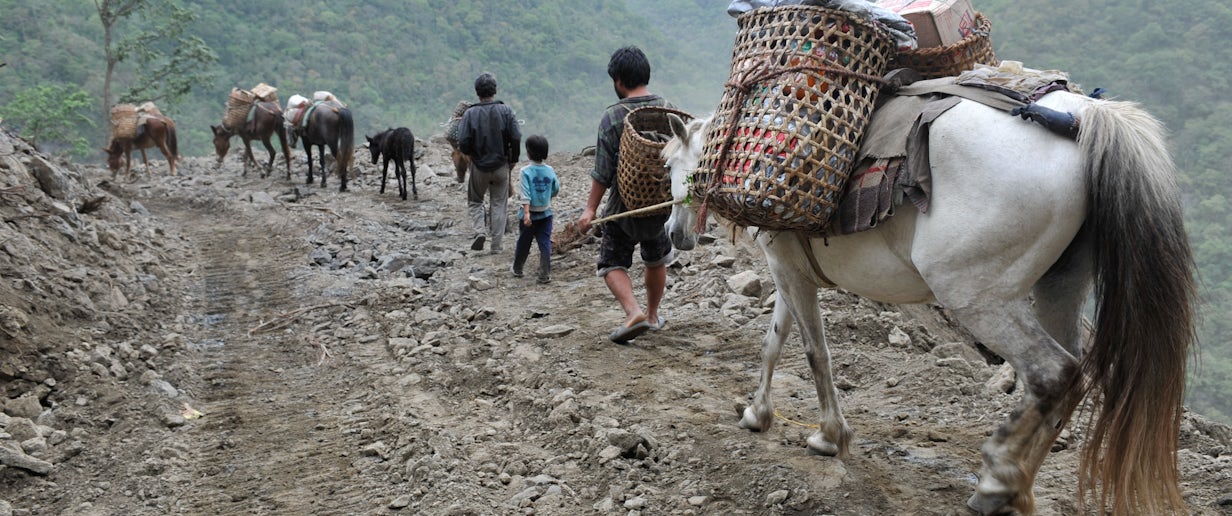Thematic Feature: Cross-border malaria elimination along the India-Bhutan and India-Nepal borders
by APLMA •

Villagers in Bhutan travel on remote dirt road with horses. Photo credit ADB 2010
Bhutan, India, and Nepal have made significant strides towards
ending malaria after decades of consistent efforts. Bhutan and Nepal reported zero
and 36 indigenous malaria cases respectively in 2022, and both are aiming to
eliminate malaria entirely by 2025 – five years ahead of the global goal. While
still a malaria high-burden country, India has also made impressive gains
against malaria with a 60% case reduction within five years. To achieve the goal
of malaria elimination by 2030, all countries are strengthening last-mile elimination
efforts, focused on hard-to-reach populations and vulnerable communities –
including efforts around cross-border malaria.
The national malaria programmes in Bhutan, India, and Nepal have faced several challenges and their experiences can provide insights into planning and implementing strategies to address cross-border malaria. APLMA has published a new Thematic Feature addressing these learnings on cross-border malaria.

International land borders present a unique challenge for anti-malaria programmes. These regions are usually remote and difficult to access, may see regular migration between countries, and may even have porous borders in some places – all of which can hinder efforts to track, monitor, and treat malaria. Preventing the re-establishment of malaria in some malaria-free districts bordering high-endemicity cross-border districts may also be a challenge.
Bhutan, India, and Nepal have stepped up efforts in recent years to address the challenges of cross-border malaria. Bhutan ensured that cross-border collaboration was specifically included in the national strategic plan as essential for achieving and sustaining malaria elimination. Both Bhutan and India have begun cross-border collaboration meetings for malaria with support from WHO and the Southeast Asia Regional Coordination Mechanism Forum. India and Nepal have also streamlined cross-border communication for effective implementation in both countries.
From the experiences of these three countries, it is clear that joint surveillance mechanisms, joint guidelines and action plans, and strong regional coordination are essential to addressing cross-border malaria. Malaria does not respect borders and thus it is essential for local communities, national malaria programmes, and global stakeholders to work together in ensuring the end of this deadly disease.






